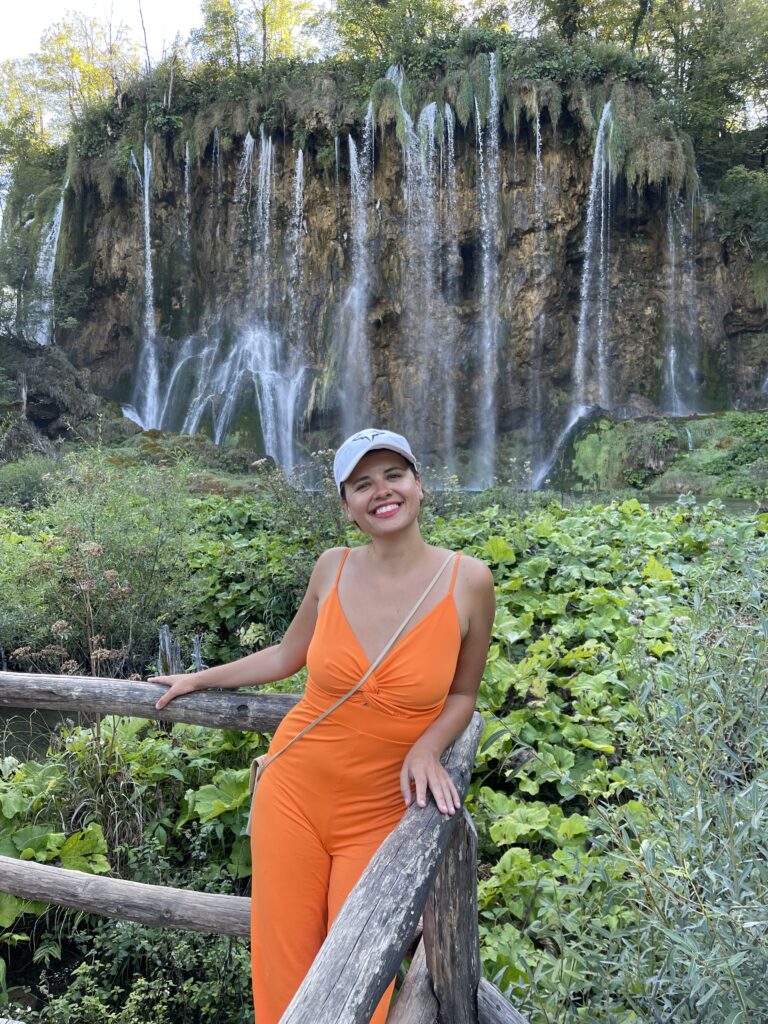Is it… emerald? Hmm… turquoise? Azure? But there it looks like… lime? Petrol? Light gray?! I’m off the deep end! 😵💫Watch as we dive in… To the sha-ha-sha-hallows of Plitvice Lakes National Park!
👁️ Color Perception
📍Plitvicka Jezera – Croatia
No, no, I am not just quoting Gaga & Cooper for the fun of it: the name of Croatia’s oldest, largest, and best-visited national park historically means “shallow basin,” derived from the Croatian words (pličina, plitvak, or plitko) for shallow. Although not all of its 16 lakes are, in fact, shallow – their depth varies from 1 to 47 meters – the term references the natural phenomenon that created these naturally carved pools, filled with… magically colored water. But what brings this magic about? And is the park well-accessible?
Walk on Water
The Plitvice Lakes had been on my list to visit for many years. Declared a UNESCO World Heritage Site in 1979, it attracts a million visitors a year. This was noticeable. I found the park to be very well-kept, with routes clearly marked and bus and boat services from one point to another. There is also a solid, asphalted road connecting the park to the major hubs along the Dalmatian coast. Ring-ding-ding, ka-ching! 💶
(Pssst… there are ways to beat the crowds, make sure to read the practical tips!).
However, unquestionably the best part of its infrastructure* is the elevated boardwalks running past and over (yes, over) the lakes and the cascading waterfalls and streams that interconnect their terraces. It is these trails, made of wooden planks, that allow even visitors with a visual impairment to get truly intimate with that one element that accurately reflects the complexity of Plitvice’s water system: the color.
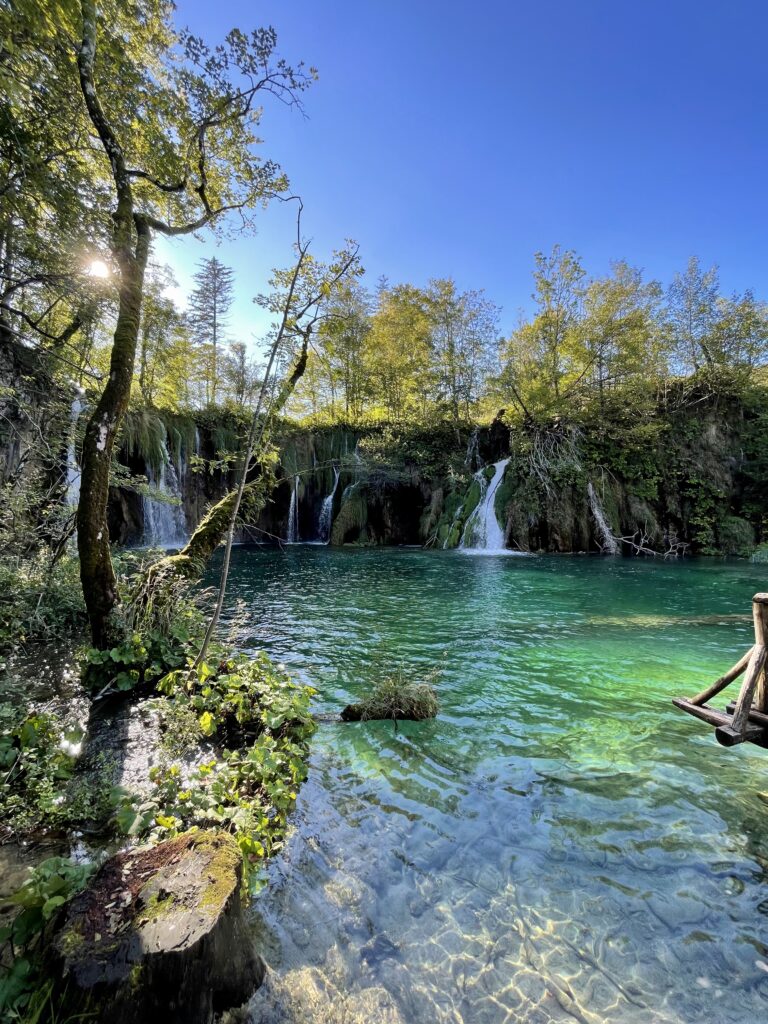
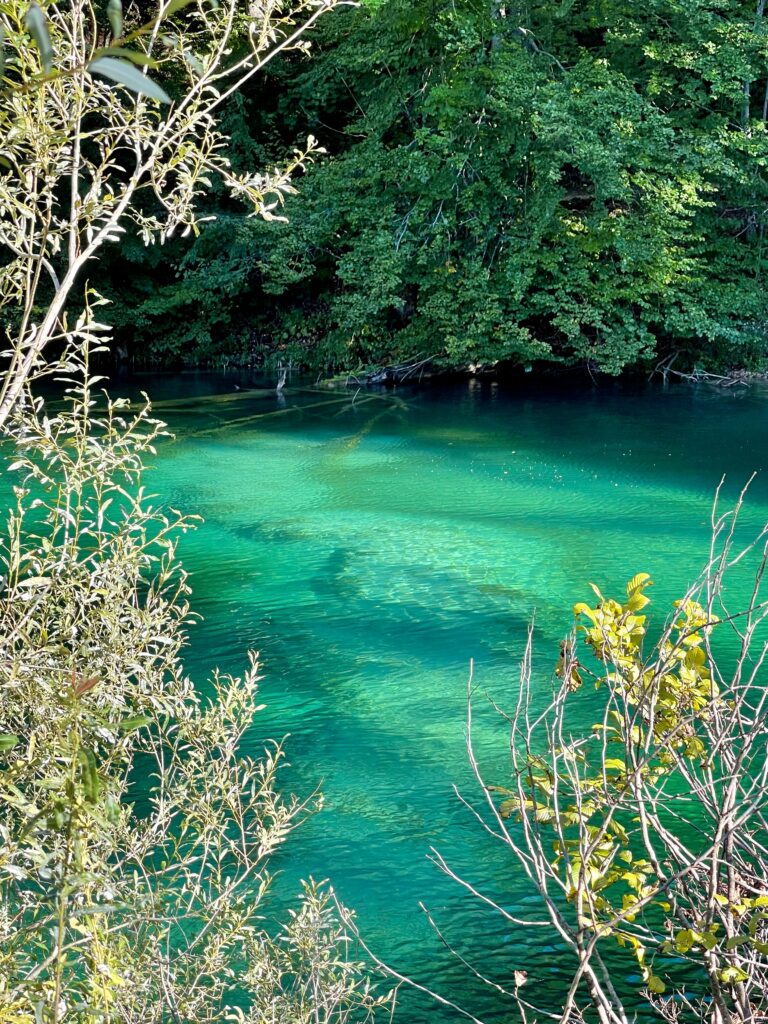
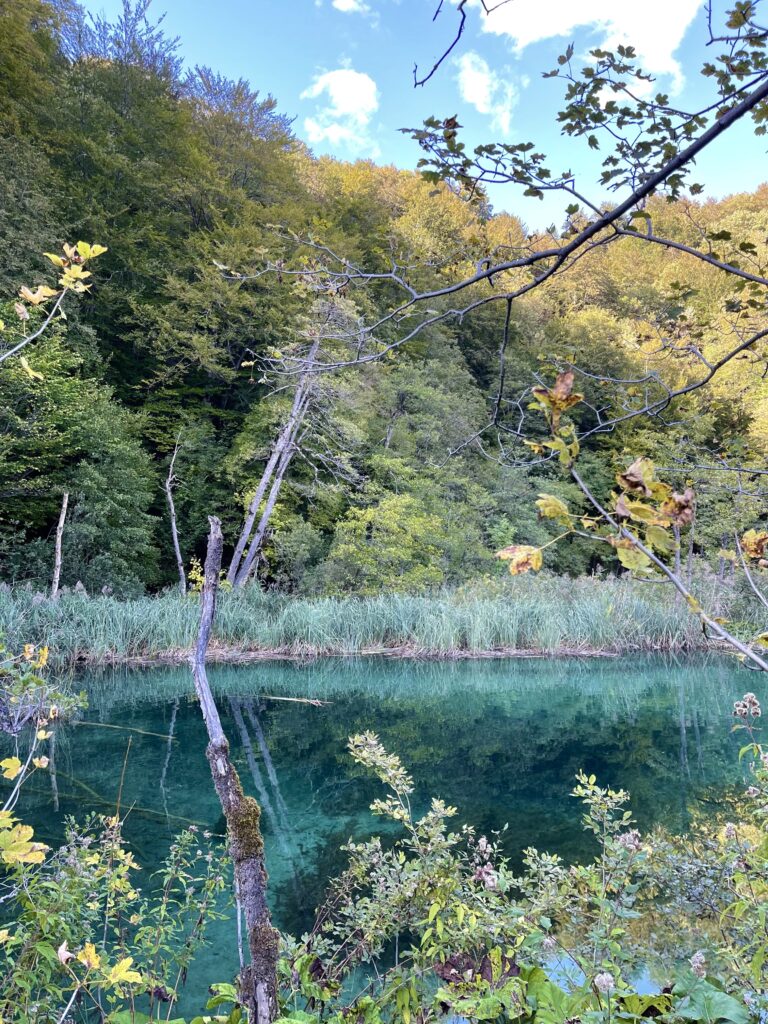
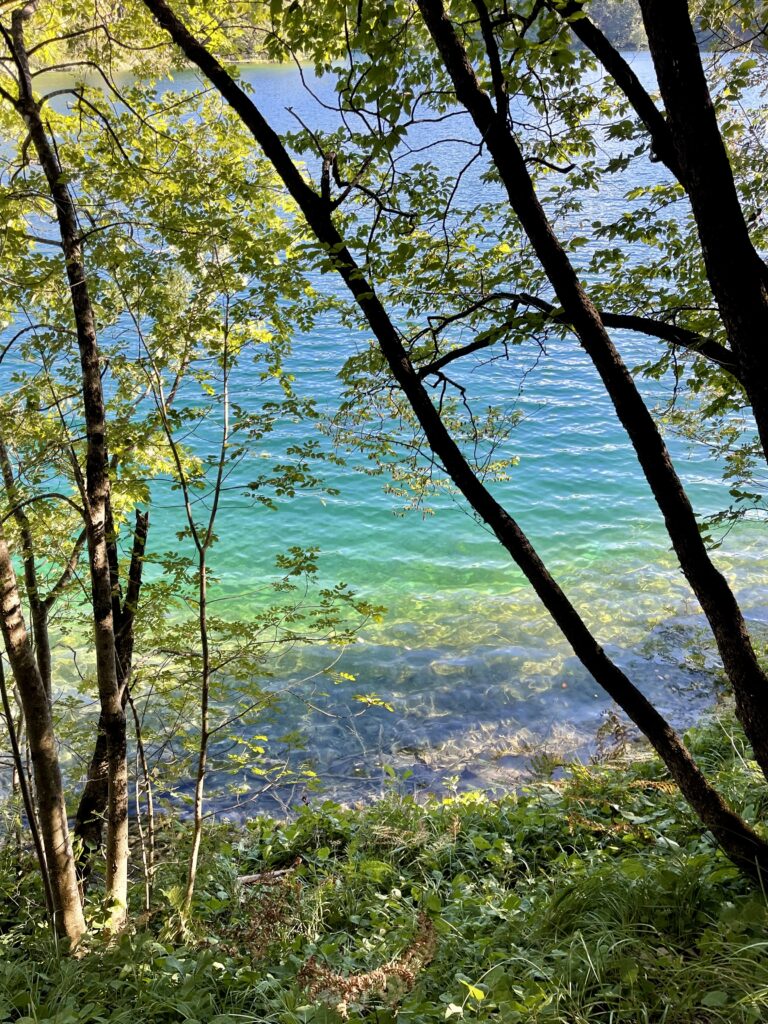
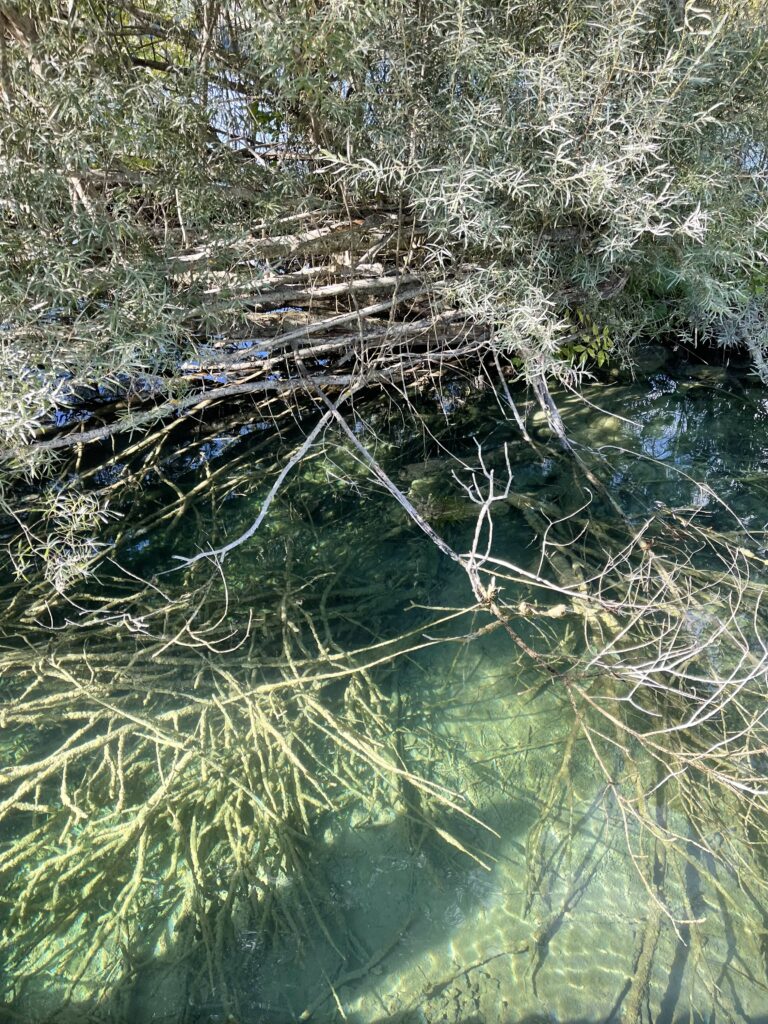
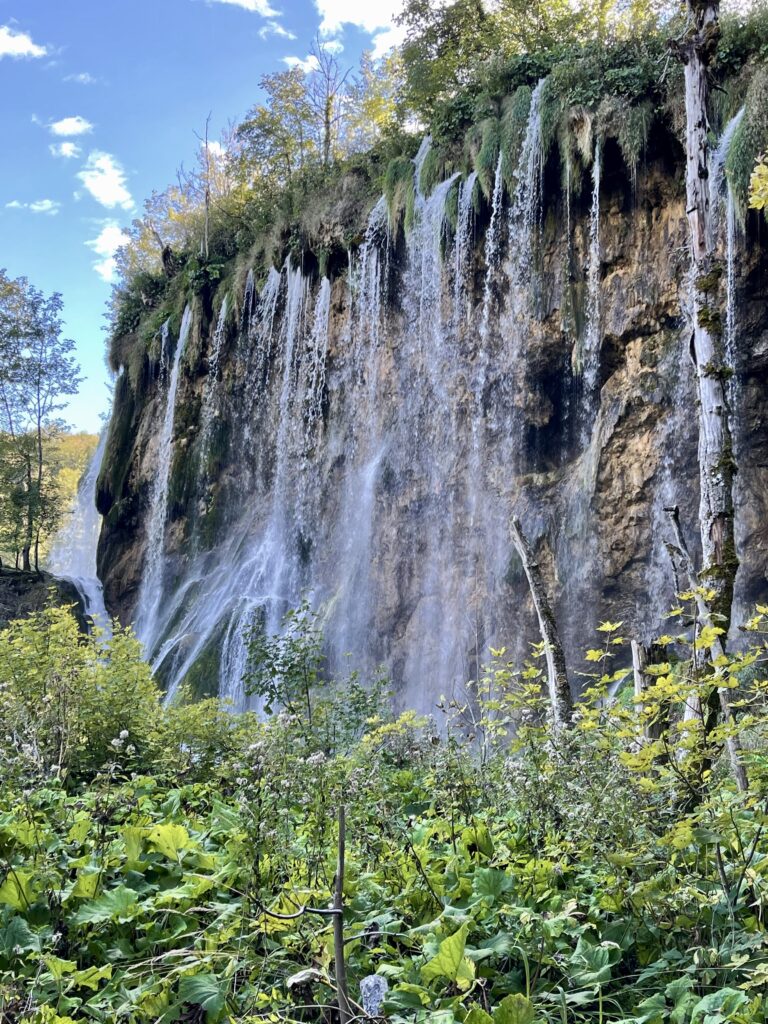
A Kaleidoscope of Color
The special color(s) of the lakes result from a combination of several natural factors. Firstly, the lakes contain a very high concentration of dissolved minerals, particularly calcium carbonate (calcite). This is due to Plitvice’s karst landscape, characterized by soluble rock types, such as limestone and dolomite. The bedrock interacts with the flowing water, creating all sorts of cool caves, sinkholes, underground rivers, and, importantly, tufa deposits—a type of porous rock formed when the calcium carbonate reaches the water surface and solidifies. The deposits and dissolved particles act as a natural prism, reflecting and scattering sunlight, giving the water those beautiful blue-green hues (the pure spectral color).
But that’s not all! The karst base (i.e., light-colored lake bottom) and high levels of carbonate also make Plitvice’s water exceptionally clear and pure. This transparency allows sunlight to penetrate to deeper levels, enhancing the light scattering even further. As a result, the colors appear more saturated (intense/vivid), especially in full sun! At times, the water appeared so luminous I swear I thought it could glow in the dark. 💎
In addition, the purity of the water stimulates the growth of various types of algae and aquatic organisms. Some of these species contain pigments and release gasses when they grow and decompose, which then react with the water. Combined, this adds various tints and shades of blue and green (lighter/darker variations of a hue) to the lakes, further enhancing their already alluring appearance.
Of course, it is worth noting that the color changes with the mineral and algae levels. Also the season, weather, and even the time of day influence the perceived color.
“In short, the lakes don’t ever look the same, not even along the length of one boardwalk!”
Appreciating the Complexity of Color
Attentive readers will probably have noticed that I have underlined certain words in the previous paragraphs. This is to help you understand just how complex color truly is and, consequently, how remarkable it is that our brain can distinguish so many different ones—about 10,000,000 to be exact. And all that with only three different types of “color-sensitive” eye cells. Damn. Reason enough to touch upon the topic of color in many more articles to come! 🥰
If you do go to Plitvice, try to play a little game and keep track of how many different colors you can distinguish! Try to name them and discuss with your travel buddies whether you think they belong to the blue or the green color family. Hmm… hope I’m not causing any feuds… I’m too far from the shallows now… 😉
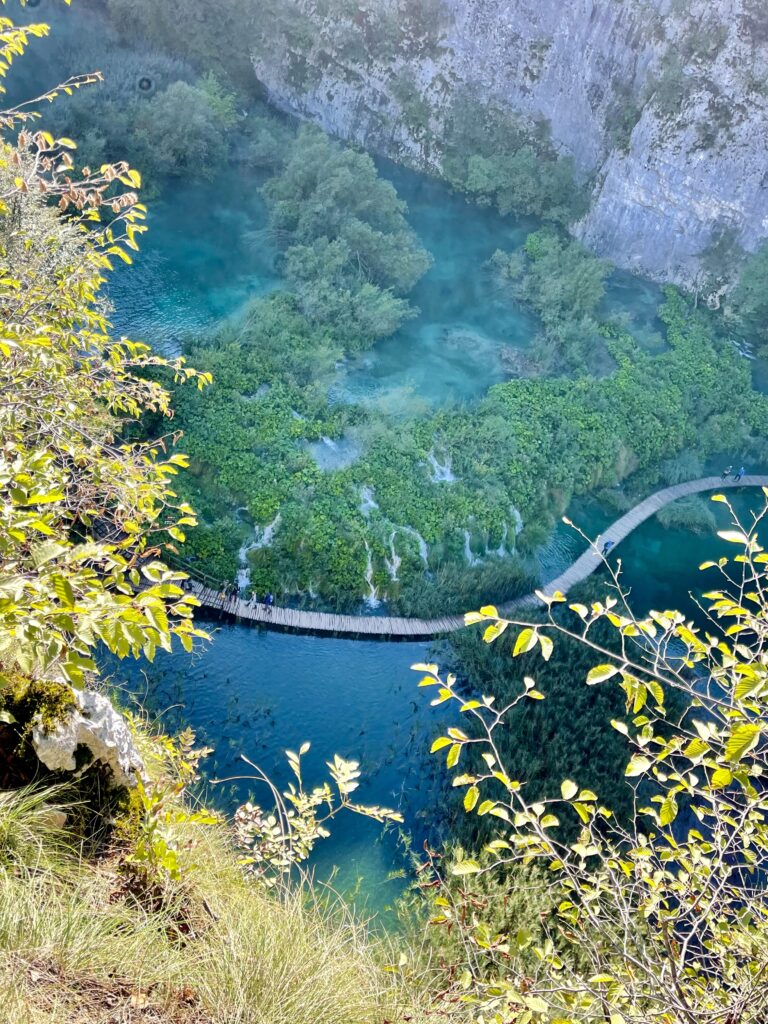
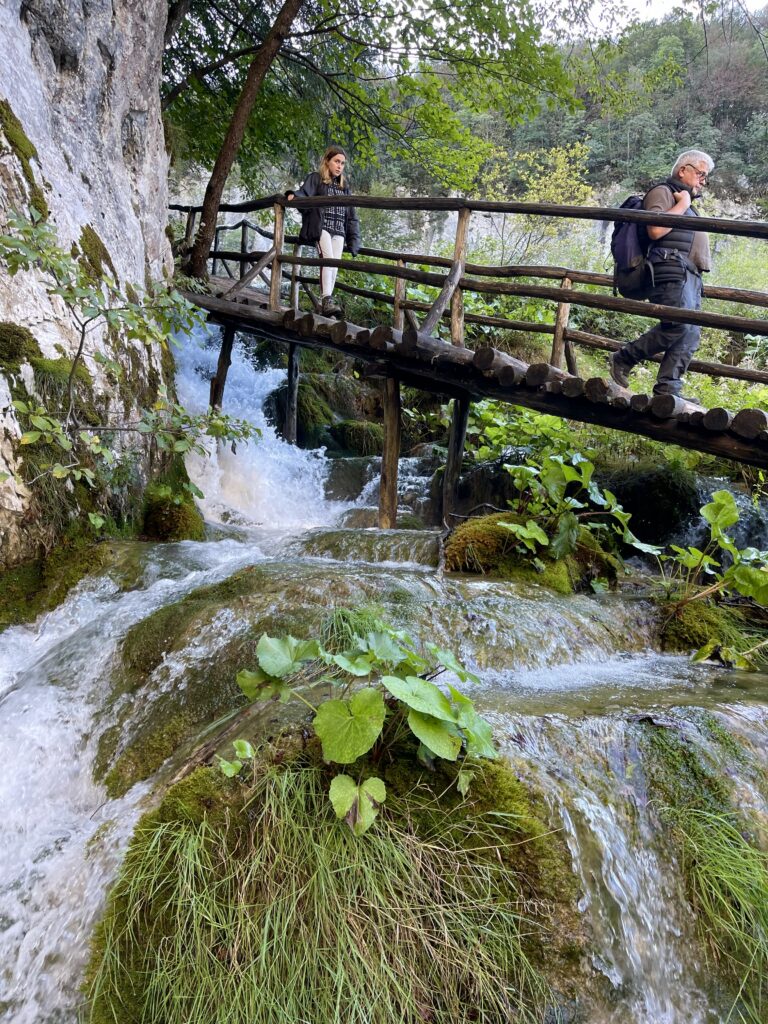
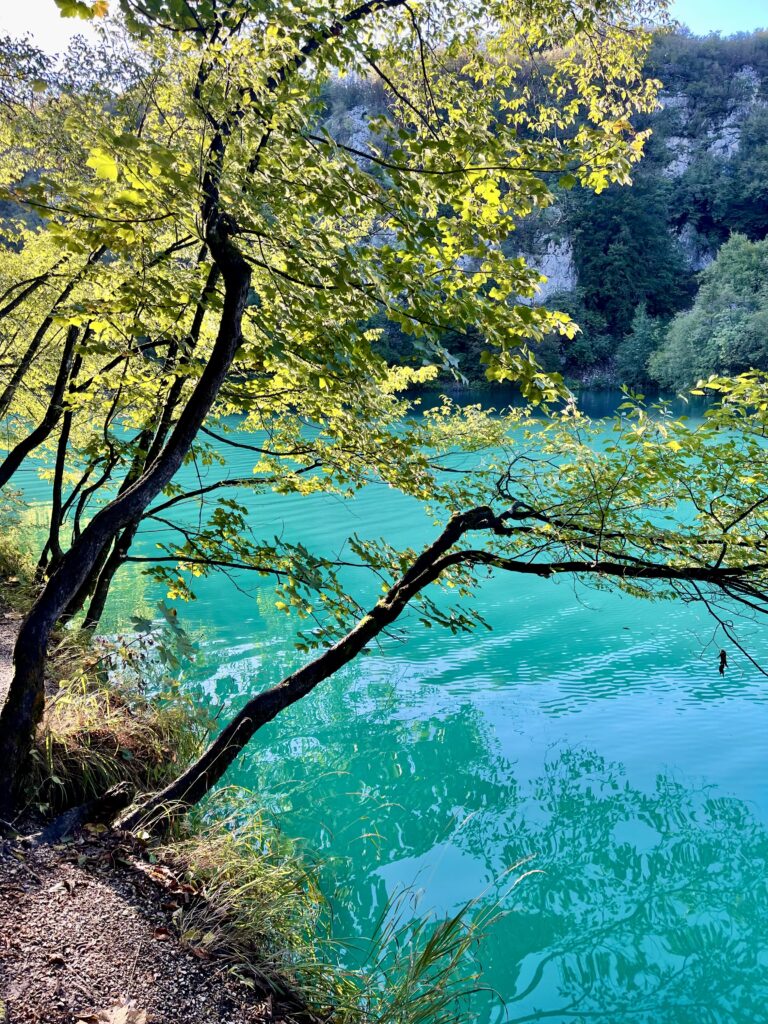
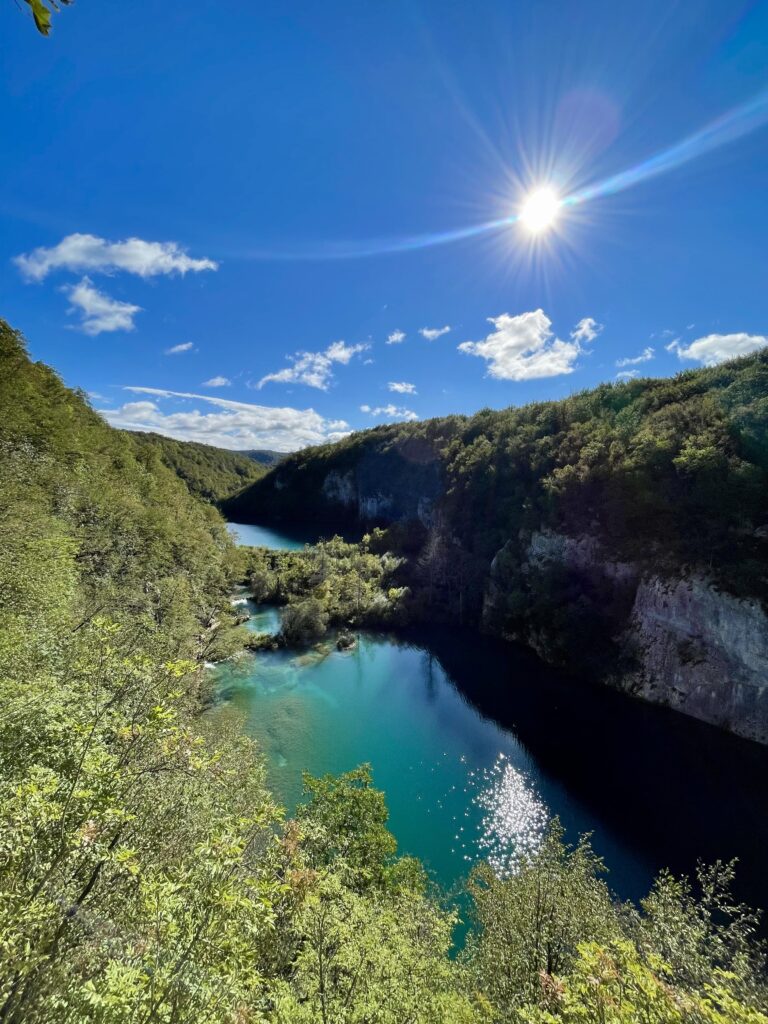
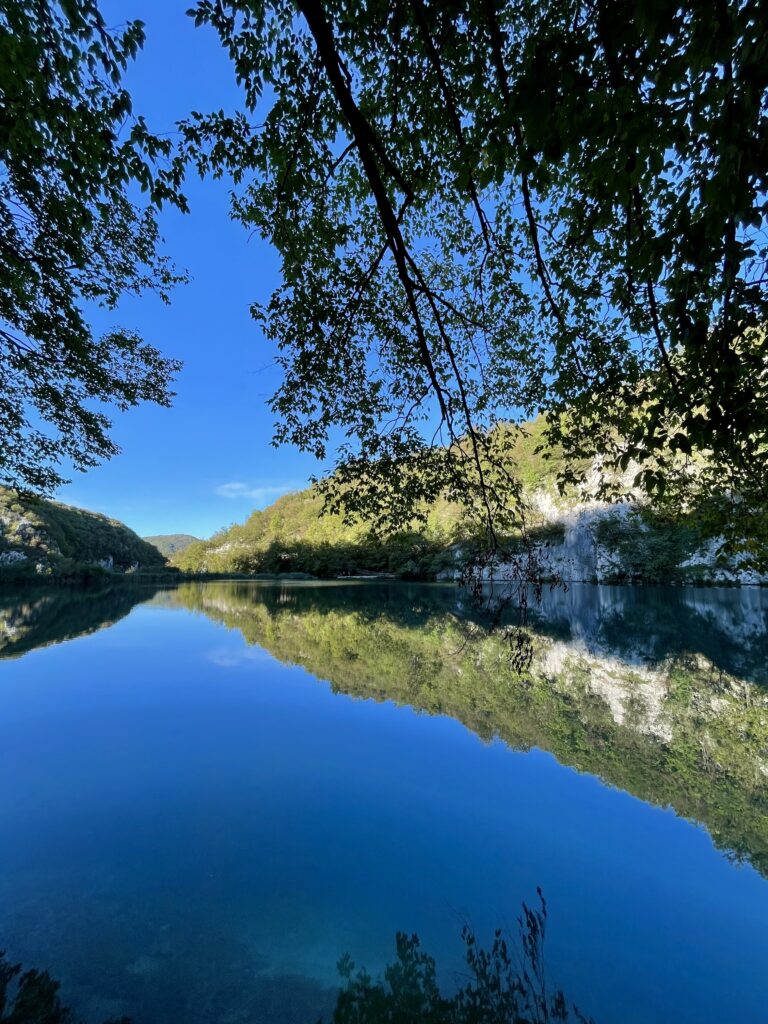

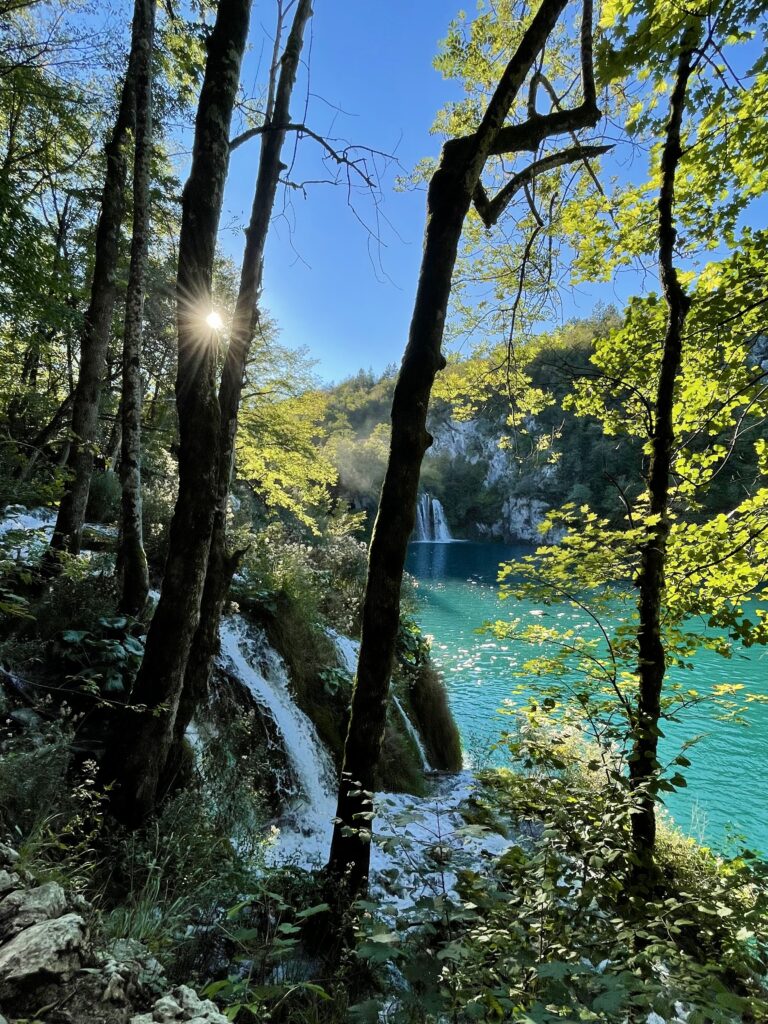
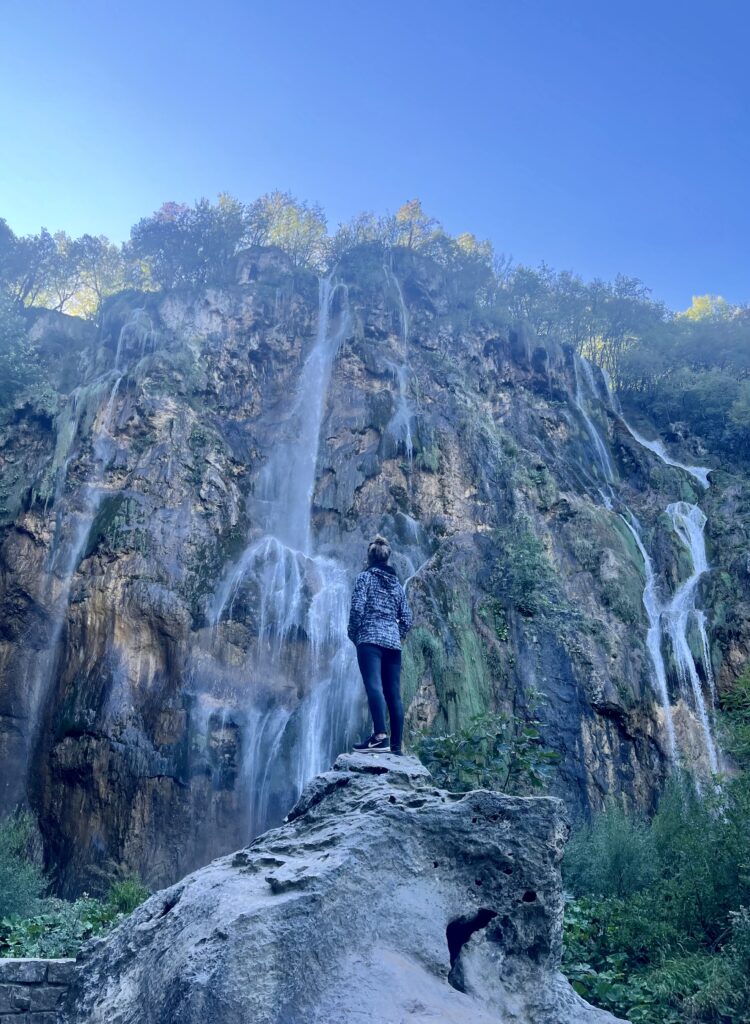
Practical Tips
📅Beat the crowds: do not visit in July and August! The boardwalks get extremely crowded. Visit in June or September instead. The colors are at their best in these sunny summer months.
🏨If you can, stay in a hotel/ guesthouse close to the park. This way you can get to the entrance either very early in the morning (7-10 am) or later in the afternoon (after 4 pm). The tour buses leave around 3-4 in the afternoon. Plus, the light is at its most beautiful at these hours.
🏨The hotels give you a multi-day entrance ticket with which you can go in and out of the park freely during the whole length of your stay.
🌅To get the best colors, I advise you to start with the lower lakes. The highest (78 m) waterfall, the ‘veliki slap’, is located here and is in full sun during the morning hours.
🚌 There are plenty of organized day tours leaving from the major coastal cities Zadar, Split and Dubrovnik.
Accessibility Tips
❗ Cane users: I strongly recommend getting a guide. Parts of the trails are without railing, increasing the risk of an accidental fall in the water. The wooden planks might also make it more complicated to roll your cane over the ground. Additionally, there is unfortunately no audio version of the information boards in the park! Nonetheless, the natural sounds do make up for it!
🦽 *The park claims to be wheelchair accessible, but I have read that some areas are challenging to navigate. According to my research, the similar Kria National Park has better and more designated accessible trails!
